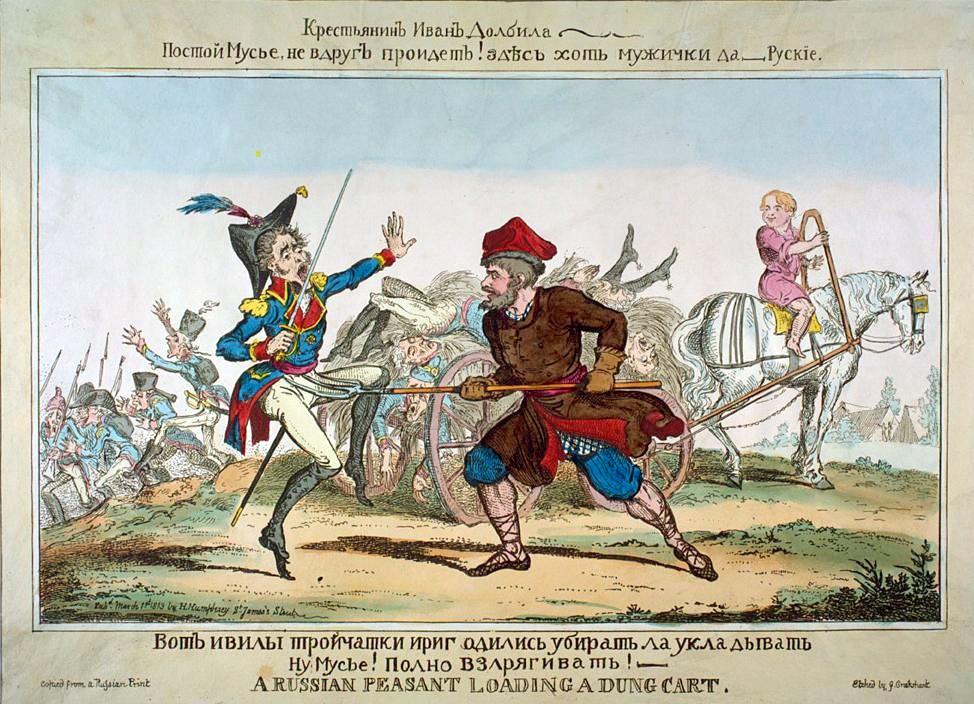Margaret summoned rebel armies to revolt against Richard’s followers in 1483. Her plan was to overwhelm Richard with attacks while her son, Henry, snuck in through Wales. It probably would have worked, but the weather in England had never favored the Lancastrians. Once again, the River Severn flooded, preventing Henry from entering England and stopping the rebels from carrying out their revolution. Richard’s reign had been in no real danger, and because he was not allowed to punish a woman, nor would he ever have done, he simply issued a warning to Lord Stanley to better control his wife.
Whispers
Apparently Lord Stanley didn’t listen as Margaret then attempted another plot. And this time she did it as all women who had come before her had done – quietly. She simply spread enough rumors about Richard to tarnish his pristine reputation. By this point, the princes in the tower had not been seen for months. Margaret herself claimed to have staged a rescue, but had no princes to show for it. Could that “rescue” have been murder? Despite Richard’s claims to the contrary, he was blamed for the boys’ murder. Was Margaret behind it all? Well, we do know that Richard’s popularity began to dip after this point. He was no longer the beautiful King of England.
More misfortune struck Richard in 1484 when his only son and heir died. Both Richard and his wife, Anne, moved into a dark place where happiness no longer existed. Anne never came back out, and she died in March 1485. Richard was a broken man. To make matters worse, a rumor spread across England that Richard had killed his wife in order to marry Edward’s eldest daughter, Elizabeth of York. The princess would then be heir to the throne and very important. Richard denied this many times, and history backs him up. There is documented evidence that Richard was in the process of organizing a Portuguese prince for Elizabeth when Anne died, and there is no historical evidence whatsoever to back up the claim that Richard wanted to marry Princess Elizabeth. It was just another rumor. Started perhaps by Lady Margaret?
Henry Tudor, on the other hand, wanted Elizabeth. With no substantial claim to the throne, marriage to the new heir would make him the unquestioned King. History tells us that Henry was no soldier. He knew nothing about battlefields or war and even less about the country he was trying to claim. Henry did have an area of expertise though - he was extremely intelligent. He knew that it was better to make friends in high places and to let experienced soldiers call the shots. This was a trait he would pass down to his granddaughter, the later Queen Elizabeth I, who is known for just that and whose time in power was a “Golden Age.” Like Elizabeth, Henry was a great leader and wise beyond his years.
A broken man
Meanwhile, Richard was struggling. Having lost his wife, his son, his reputation, the love of his people, and his allies, he marched to intercept Henry’s newly assembled army on August 22nd, 1485.
Although Richard was emotionally beaten, the old soldier in him had not died. He was, afrer all, trained by the Kingmaker. The Yorkist troops positioned themselves atop Ambion Hill and used their advantage to tire the Lancastrians at the Battle of Bosworth Field. Henry’s troops were waning; fighting uphill was no easy task. Richard and his army were set to win. But Lord Stanley had other ideas. He and his troops had entered the battle on the side of the Yorkists, and when Richard called for reinforcements to finish the battle, Lord Stanley’s men ran downhill and attacked Richard’s army. The last words the great King ever uttered were, “treachery, treachery, treachery.” King Richard III, the last King of England to die fighting on the battlefield, was slaughtered as he fought to keep England under the protection of the House of York. He was then stripped naked, and his lifeless body abused, molested and throne in a shallow grave that would not be found for half a millennium.
It is said that Henry Tudor lifted Richard’s crown from the rose bush and crowned himself King Henry VII on the battlefield. Another one of Shakespeare’s lies. Henry, or one of his men, had actually stolen the crown from Richard’s cart before the battle. For all we know, he had fought with the stolen crown on his head.
Henry was no fool however, and he was aware that England would not take kindly to this French-speaking, Welshman who had just won the crown by conquest. So he decided to re-write history and declared that he was crowned King on August 21st – the day before the Battle of Bosworth Field. That meant that legally Richard was not defending his crown, but fighting Henry for it. This made Richard and his followers the true traitors. This also meant that Henry was legally King and did not need Princess Elizabeth. He most certainly did not mention marriage again. But Elizabeth, like her mother Elizabeth Woodville, was not someone to take lightly. Despite no repeat mention of wishing to marry her, Henry seemed to quickly change his mind and the two were hastily married in a quiet ceremony very unbefitting for a King. Eight months later, their first son and heir was born. Premature babies rarely survived in the Middle Ages, yet this child – born at only eight months – easily made it. Why is that? Could it be that Elizabeth had realized she was no longer needed and had quickly trapped Henry? Had she seduced him, become pregnant and demanded to be made Queen?
History’s lips are once again sealed.
With the marriage of Henry to Elizabeth, the two warring houses were now joined. The red Lancaster rose and the white York rose were now drawn together and called the Tudor rose. Most historians believe that the Wars of the Roses ended with the Battle of Bosworth Field, but I believe it ended with the marriage of the Lancastrian King to his Yorkist Queen and the birth of their Tudor son.
And so began the next dynasty.
By M.L King, a history enthusiast and part-time blogger. You can connect with her on Facebook here.
We would like to send a special message of thanks to M.L King for her excellent Wars of the Roses series of articles. I hope you have all enjoyed it too!
Want to read more? Go to the blog now and see what else we have for you. Click here!




















